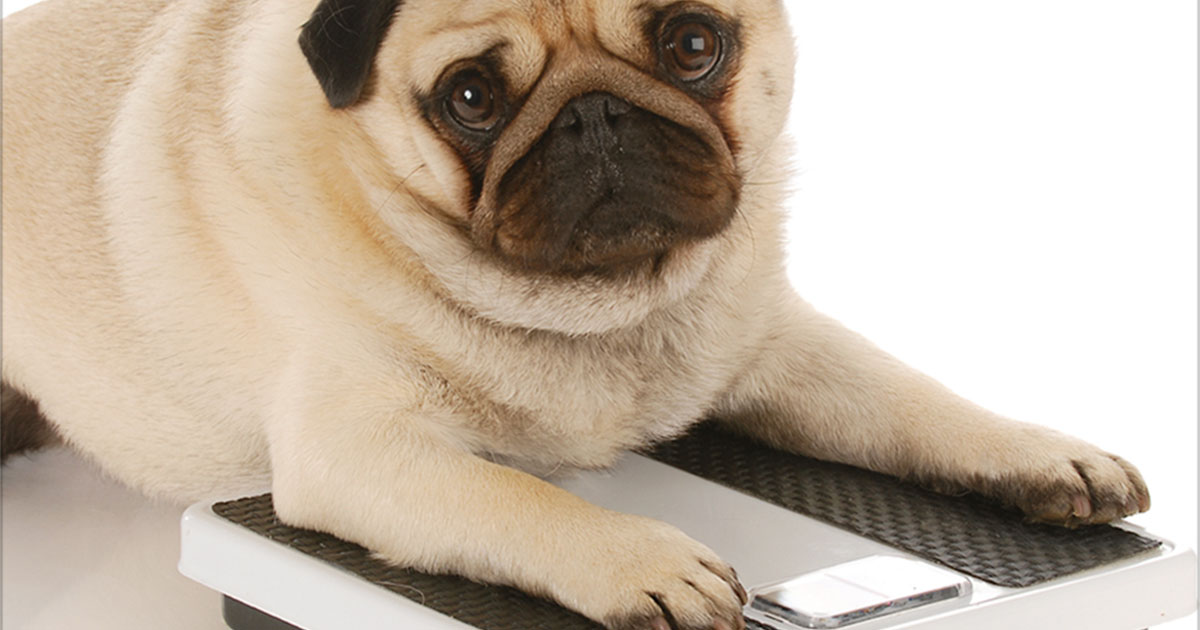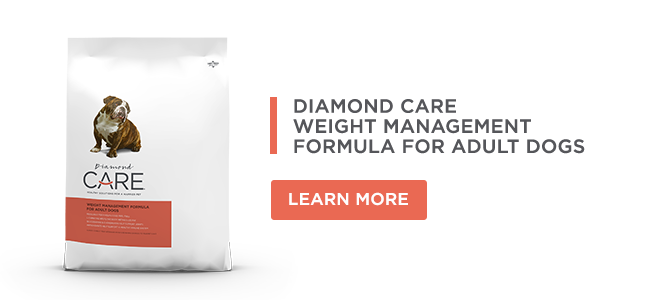“He’s not fat; he’s big boned!”
How many times have you heard those words or uttered them yourself? No one wants to believe their canine companion is overweight or obese. But according to the Association for Pet Obesity Prevention (APOP), in 2018 veterinarians identified an estimated 56 percent of U.S. dogs as overweight or obese.
To make matters worse, many dog owners don’t realize they have a pudgy pooch. During its 2014 survey, APOP found 95 percent of owners of overweight dogs incorrectly identified their pet as being at a normal weight.
Why the perception gap? Some dog owners may be in denial about their pet’s size. Or it’s possible some pet parents have trouble recognizing what’s an appropriate weight for their four-legged family member. Regardless of the reason, the difference in veterinarians’ and pet parents’ perceptions makes an already weighty subject that much more difficult for veterinary teams to address.
What’s your dog’s ideal weight?
Figuring out your dog’s ideal weight can be difficult. You can refer to breed standards — assuming the official breed standard includes a weight range — but you’ll also need to consider your dog’s age, gender, height and body build. Your veterinarian tracks your dog’s body weight from one examination to the next, but knows the number on the scale doesn’t really tell if your dog is at an ideal weight for him or her.

How to tell if your pup is portly
Your veterinarian will most likely use a body condition scoring system to determine whether your canine companion is overweight, just right or underweight. Two body condition scoring systems are commonly used by veterinarians. Both are easily found online, complete with pictures of how underweight, ideal weight, overweight or obese dogs look from different viewpoints. You can compare your dog to the scoring system’s pictures to get an idea of your pet’s body condition score. You can also determine if your dog is at a healthy body condition by using the following approach:
- Can you easily feel your dog’s ribs? Run your hands along your dog’s sides as if you’re petting them. If you can feel their ribs using only slight pressure, your pooch is likely at an ideal weight. But if you need to apply pressure to feel the ribs, then your dog is likely overweight or worse.
- Does your dog have an easily identifiable “waist”? When you look down from above your dog, do you see an hourglass shape with a waist between their abdomen and hip joints? Does their belly slope upward from the ribs to the back legs when you look from the side? If your pup looks like a hot dog, chances are they are overweight.
- Is your pet’s back flat? Can you see or feel “love handles” over the hips or top of the tail? Overweight or obese pets may look like they have a wider-than-normal back, and fat stores over the hips or tail head can be obvious. If you think you could use your dog’s back for a table or ottoman, they are most likely overweight.
If you suspect your dog may be overweight, you’ve taken an important first step toward addressing the problem: recognition. However, your veterinarian needs to be part of the solution. Your veterinarian can create an appropriate nutrition and exercise program to help your canine companion achieve their ideal weight and body condition. And members of the veterinary team can provide support and encouragement along your dog’s weight loss journey (if one is necessary).
A different dog food may be needed
Your veterinarian may recommend feeding a specifically formulated dog food to help your four-legged friend lose weight safely. That’s because weight management diets are designed to provide all of the nutrients a dog needs while reducing the number of calories eaten. Diamond CARE Weight Management Formula for Adult Dogs is one such diet that can help address your canine companion’s weight issues. You can learn more by visiting the product information page.
Remember, it’s not too late to help your best friend live a healthier, more active life.








